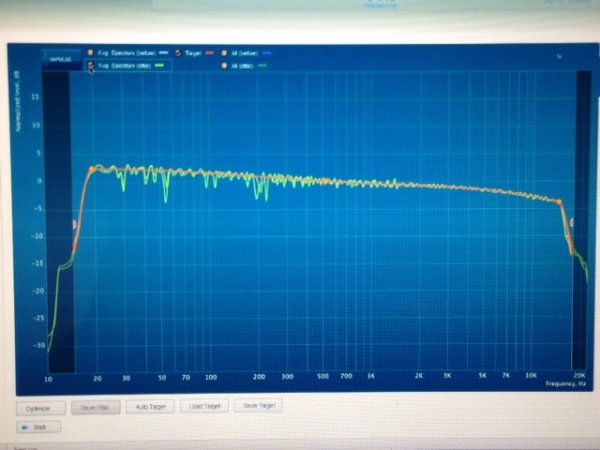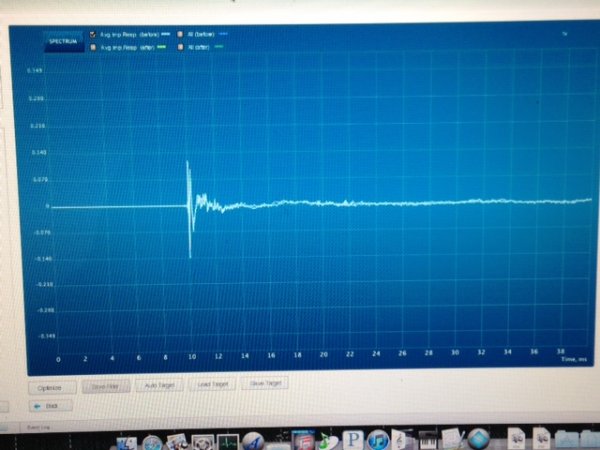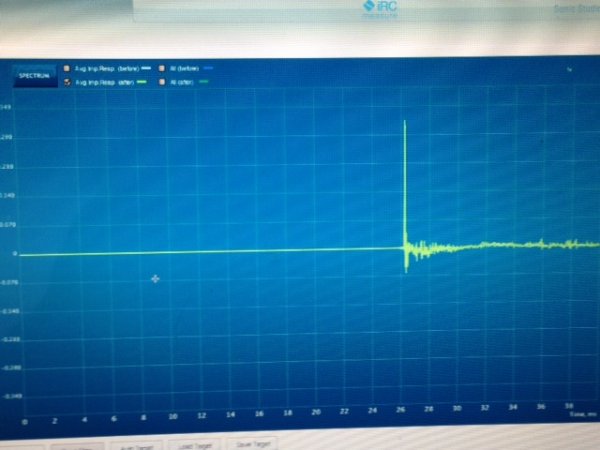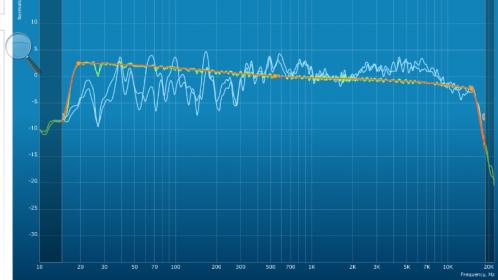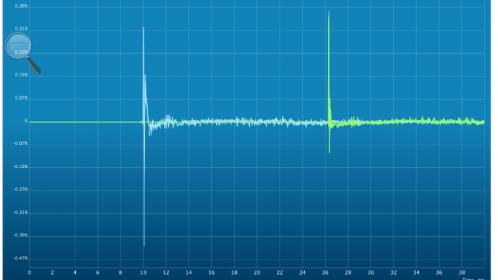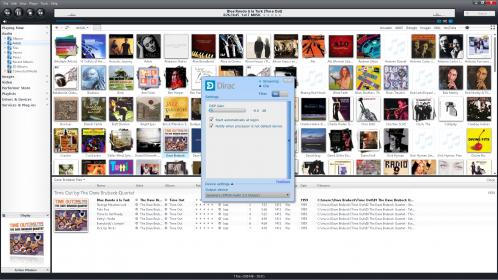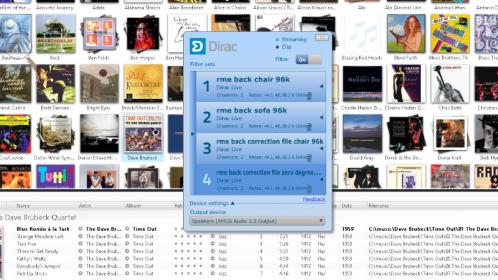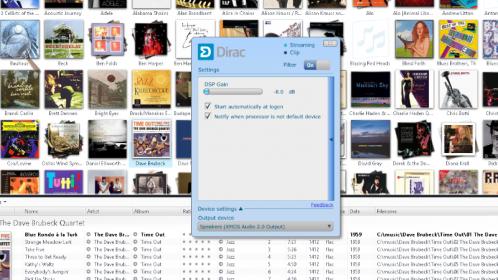Well, here's an interesting set of graphs to illustrate the magnitude of improvement possible with this correction software. Dirac is built-in to the Amarra Symphony playback software. Since I already owned Amarra, I paid the small fee and activated the "IRC" function. You may then take microphone measurements as directed by the software, then generate the filter which corrects the response at the listening position.
Here's the frequency response spectrum of my room (awful) without any correction. I was using some simple parametric EQ to smooth out the lower regions, but nothing close to the results achieved with the Dirac.
The "target" frequency response curve is shown in orange.
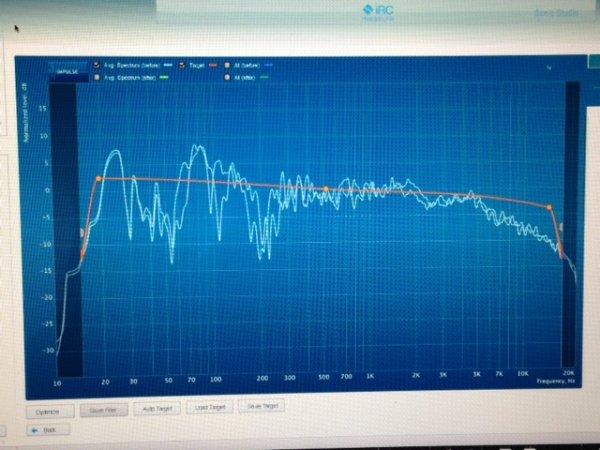
Lee
Here's the frequency response spectrum of my room (awful) without any correction. I was using some simple parametric EQ to smooth out the lower regions, but nothing close to the results achieved with the Dirac.
The "target" frequency response curve is shown in orange.

Lee
Last edited:












